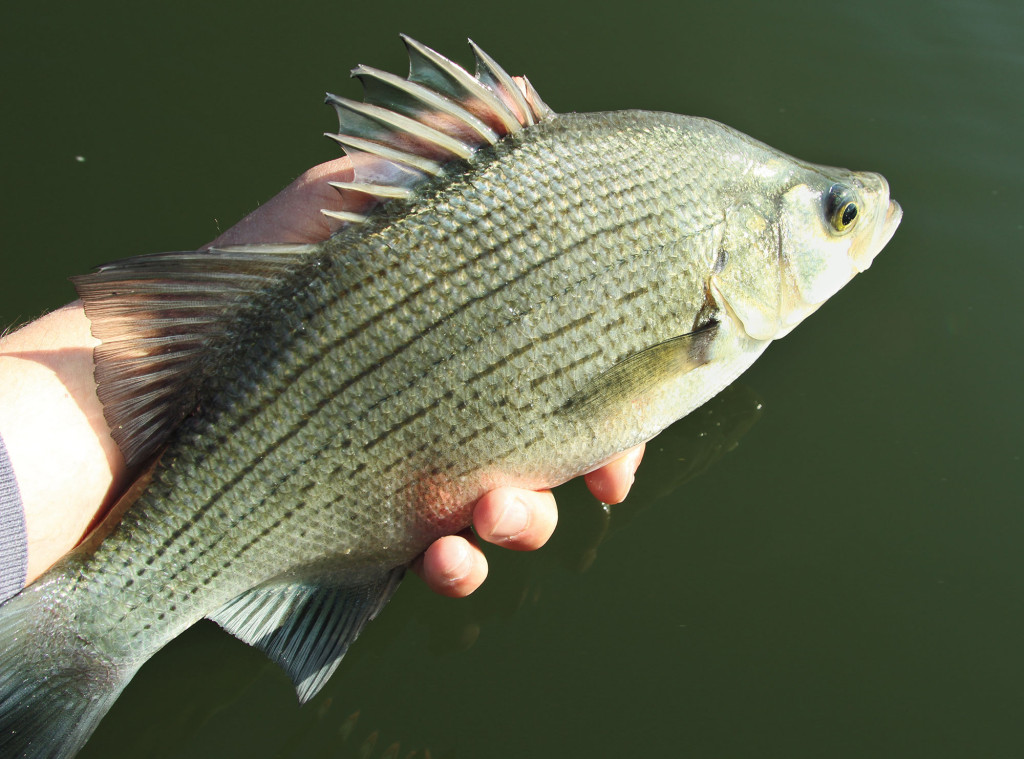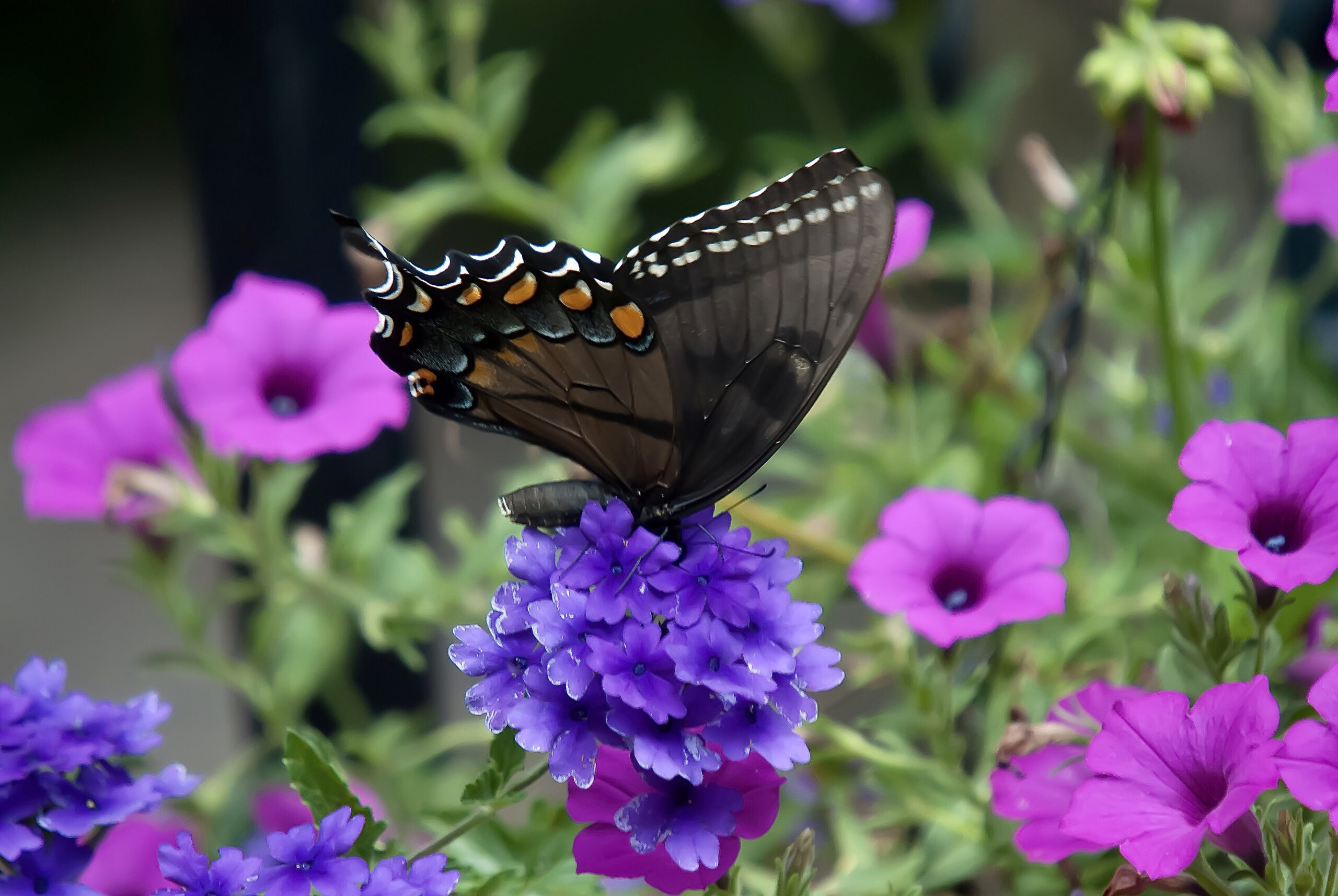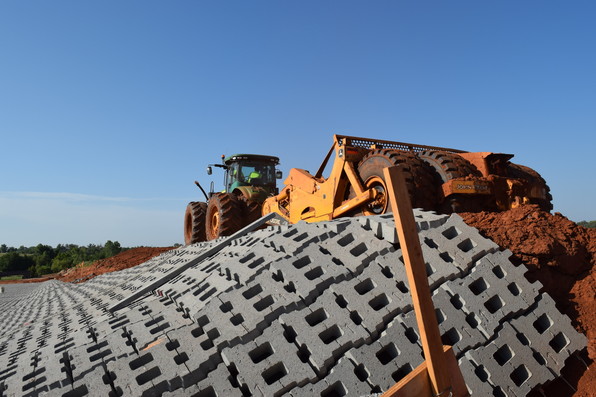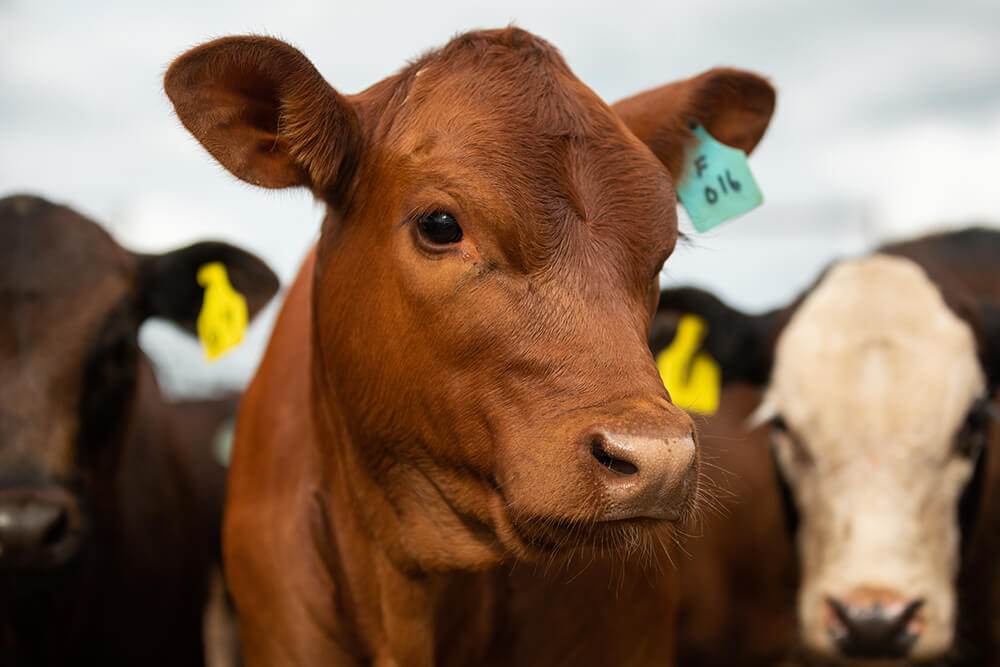Outdoors
Fishing Report for August 8, 2018

Courtesy of Oklahoma Department of Wildlife Conservation (ODWC)
Central
Draper: August 3. Elevation above normal, water 88 and stained. White bass fair on crankbaits, in-line spinnerbaits and jigs along inlet. Largemouth bass fair on bill baits, buzz baits, plastic baits and spinnerbaits around points, shallows, shorelines and standing timber. Blue and channel catfish fair on punch bait and stinkbait around docks, points and riprap. Report submitted by Chad Strang, game warden stationed in Cleveland County.
Hefner: August 6. Elevation normal, water 82-85 and clear. Channel catfish fair on cut bait at 20-30 ft. off the dam. Largemouth bass slow on spinnerbaits and soft plastic baits along shorelines. Crappie slow on minnows and jigs off the docks and dam. White bass and striped bass hybrids fair on lipless baits, sassy shad and grubs off points early and late. Report submitted by Lucky Lure Tackle.
Thunderbird: August 3. Elevation below normal, water 89 and stained. Largemouth bass fair on bill baits, buzz baits, spinnerbaits and topwater lures around points, shallows, shorelines and standing timber. White bass and saugeye slow on bill baits, crankbaits and plastic baits around points. Channel and blue catfish slow on chicken liver, shad and stinkbait along the dam, points and riprap. Report submitted by Chad Strang, game warden stationed in Cleveland County.
Northeast
Copan: August 6. Elevation normal, water clearing. Channel, blue and flathead catfish good on shad, sunfish and worms along riprap, river channel and shorelines. White bass fair on grubs and in-line spinnerbaits around points. Crappie slow on minnows and jigs around brush structure and docks. Report submitted by Joe Alexander, game warden stationed in Washington County.
Ft. Gibson: August 7. Elevation below normal, water 86 and clear. White bass fair trolling crankbaits, rooster tails and in-line spinnerbaits along flats and main lake. Blue, channel and flathead catfish fair on live shad and minnows drifting flats, main lake and river channel. Crappie fair on minnows, jigs and tube jigs around brush structure, docks and riprap. Report submitted by Rick Stafford, Wagoner.
Greenleaf: August 3. Elevation normal, water 88 and clear. Largemouth, smallmouth and spotted bass fair on bill baits, buzz baits, crankbaits, jerk baits and spinnerbaits around brush structure, channels, in coves and shorelines. Crappie fair on minnows, grubs, hair jigs, jigs and tube jigs at 12-15 ft. around brush structure, creek channels and standing timber. Blue, channel and flathead catfish fair on cut bait and shad along channels, in coves, flats and main lake. Report submitted by Lark Wilson, game warden stationed in Muskogee County.
Hulah: August 6. Elevation normal, water clearing. White bass fair on in-line spinnerbaits and swimbaits around points. Channel, blue and flathead catfish good on chicken liver, shad, sunfish and worms along riprap and shorelines. Crappie slow on minnows and jigs around brush structure and docks. Report submitted by Joe Alexander, game warden stationed in Washington County.
Keystone: August 2. Elevation above normal, water 88. Blue catfish fair on cut bait below the dam and along channels. Report submitted by Karlin Bailey, game warden stationed in Creek County.
Lower Illinois: August 3. Elevation normal, water 60 and murky. Trout good on nymphs, PowerBait and worms below the dam, along channels, rocks and below riffles at the head of deeper holes. Report submitted by Jeremy Bersche, game warden stationed in Sequoyah County.
Skiatook: August 4. Elevation below normal, water 80s and clear. Striped bass hybrids and white bass fair on live shad at 10-20 ft. in the main lake and around points. Crappie fair on minnows and jigs at 5-15 ft. around brush structure and standing timber. Report submitted by Paul Welch, game warden stationed in Osage County.
Tenkiller: August 3. Elevation 2 1/2 ft. below normal, water clear to murky. The lake is down, be careful for exposed and shallow flats that are not marked. Good luck and get it in before school starts. Fish are seeking deeper shaded waters and cover. Largemouth, smallmouth and spotted bass fair on crankbaits suspended at 15-30 ft. in the main lake. Largemouth bass are suspended and harder to get to and catch with only 8+ pounds winning the last local jackpot tournament. Flathead, channel and blue catfish fair on trotlines and juglines baited with goldfish, live bait and sunfish. White bass fair on crankbaits in the main lake. Surfacing white bass can still provide quick action for the boater who keeps his eyes open and covers some acreage. Report submitted by Brady May, game warden stationed in Cherokee County.
Webbers Falls: August 3. Elevation normal, water 88 and murky. Largemouth, smallmouth and spotted bass fair on bill baits, buzz baits, crankbaits, jerk baits, plastic baits and spinnerbaits around brush structure, channels, in coves, creek channels, shallows, shorelines and standing timber. Crappie fair on grubs, hair jigs, jigs, minnows and tube jigs around brush structure, channels, standing timber and on bottom under bridges. Blue, channel and flathead catfish fair drifting shad and cut bait on bottom along channels, creek channels, flats and shallows. Report submitted by Lark Wilson, game warden stationed in Muskogee County.
Northwest
Ft. Supply: August 6. Elevation normal, water clear. Channel catfish fair on cut bait, punch bait and stinkbait along the dam, main lake and riprap. Report submitted by Mark Reichenberger, game warden stationed in Woodward County.
Foss: August 6. Elevation 3/4 ft. below normal, water high 70s. Striped bass hybrids good on live bait in deep water. Catfish good on juglines baited with cut shad. White bass and walleye fair. Report submitted by Eric Puyear, B & K Bait House.
Southeast
Arbuckle: August 4. Elevation 1/2 ft. below normal, water 81-83. Largemouth bass good on topwater lures early morning and on crankbaits and soft plastic baits. Smallmouth bass good on topwater lures early morning, on spinnerbaits in the wind and on soft plastic baits. Crappie slow on yellow/white slabs slayer baits at 18 ft. off docks and out on the lake. White bass good on grubs up creeks and on roadrunners along flats. Channel catfish good on punch bait, dead minnows and stinkbait. Report submitted by Jack Melton.
Blue River: August 6. Elevation normal, water 84 and clear. Largemouth, spotted and smallmouth bass good on crankbaits, spinnerbaits and topwater lures around brush structure, rocks and sandbars; bass topwater action is best at dawn and dusk. Channel catfish excellent on chicken liver, punch bait, stinkbait and worms around brush structure and deeper pools on the edge of currents. Bluegill, green and redear sunfish good on in-line spinnerbaits, plastic baits and small lures along sandbar and shallows. Approximately 2,000 channel catfish were stocked on July 31. Report submitted by Matt Gamble, biologist at the Blue River Public Fishing and Hunting Area.
Broken Bow: August 3. Elevation below normal, water 88. Largemouth, smallmouth and spotted bass good on Alabama rigs and plastic baits around brush structure, creek channels, points and standing timber. Crappie good on minnows and jigs around brush structure and standing timber. Report submitted by Dru Polk, game warden stationed in McCurtain County.
Eufaula: August 2. Elevation normal, water murky but slowly clearing. Blue catfish excellent on cut bait, live bait, live shad, shad and worms below the dam, along the dam and river mouth. Crappie fair on minnows and jigs around bridges. Largemouth and spotted bass good on grasshoppers, small lures and spinnerbaits in coves, main lake and weed beds. Report submitted by Cannon Harrison, game warden stationed in McIntosh County.
Hugo: August 3. Elevation below normal, water 87 and murky. Blue, channel and flathead catfish slow on cut bait, dough bait, live bait and shad below the dam, along channels, main lake and river channel. Crappie slow on minnows and jigs below the dam, around brush structure, main lake and river channel. Report submitted by Andrew Potter, game warden stationed in Choctaw County.
Konawa: August 2. Elevation normal, water 96 and clear. Largemouth bass good on buzz baits, crankbaits, jigs, plastic baits and topwater lures in the main lake, around points, river channel and weed beds. Striped bass hybrids and white bass fair on Alabama rigs, crankbaits and live shad in coves, main lake and river channel. Channel catfish fair on chicken liver, cut bait and stinkbait in coves, along creek channels, inlet and riprap. Report submitted by Garret Harley, game warden stationed in Seminole County.
Lower Mountain Fork: August 3. Elevation normal, water clear. Trout fair on caddis flies, PowerBait and small lures along creek channels and rocks. Report submitted by Mark Hannah, game warden stationed in McCurtain County.
McGee Creek: August 4. Elevation normal, water 86. Crappie, white bass and spotted bass good on minnows around brush structure, river channel and standing timber. Channel and flathead catfish fair on chicken liver, goldfish and sunfish along creek channels and river channel. Report submitted by Jay Harvey, game warden stationed in Atoka County.
Pine Creek: August 3. Elevation below normal, water clear. Largemouth bass good on topwater lures along shallows. Crappie fair on minnows and jigs around brush structure. Channel catfish fair on cut bait and punch bait in the main lake. Report submitted by Mark Hannah, game warden stationed in McCurtain County.
Robert S. Kerr: August 3. Elevation normal, water murky. Largemouth and spotted bass fair on flukes, lipless baits, plastic baits and spinnerbaits in coves and creek channels. Blue, channel and flathead catfish fair on cut bait, live bait, live shad, stinkbait and sunfish along flats, main lake, river channel and river mouth. Report submitted by Allen Couch, game warden stationed in Haskell County.
Sardis: August 2. Elevation below normal, water 90. Largemouth and spotted bass fair on buzz baits, crankbaits, hair jigs, jerk baits, plastic baits, spinnerbaits, topwater lures and tube jigs around brush structure, channels, creek channels, points, rocks, shorelines, standing timber and weed beds. Blue, channel and flathead catfish fair on cut bait, shad and sunfish along flats, main lake and shorelines. Crappie fair on hair jigs, minnows and tube jigs around brush structure, creek channels and standing timber. Report submitted by Dane Polk, game warden stationed in Pushmataha County.
Texoma: August 6. Elevation below normal, water 88 and clear. Striped bass good on live shad and topwater lures along discharge, main lake and points. Crappie fair on hair jigs and tube jigs around brush structure and docks. Blue catfish good on cut bait and live shad below the dam, along channels and main lake. Report submitted by Trey Hale, game warden stationed in Bryan County.
Wister: August 3. Elevation normal, water cloudy. Largemouth bass fair on bill baits, buzz baits, crankbaits, plastic baits and spinnerbaits around brush structure, channels and points. Blue catfish fair on chicken liver, cut bait, shad and stinkbait along channels and main lake. Crappie fair on minnows and jigs around brush structure, channels and standing timber. Report submitted by Thomas Gillham, game warden stationed in LeFlore County.
Southwest
Ft. Cobb: August 6. Elevation below normal, water 84 and clear. Channel and blue catfish fair on cut bait and stinkbait around brush structure and main lake. Report submitted by Brayden Hicks, game warden stationed in Caddo County.
Tom Steed: August 6. Elevation normal, water 82. Striped bass hybrids, white bass and saugeye fair trolling crankbaits in the main lake and around points. Report submitted by David Smith, game warden stationed in Kiowa County.
Waurika: August 5. Elevation dropping, water 87. Blue and channel catfish fair on cut bait, stinkbait and worms in the main lake, around points and shorelines. Report submitted by Chris Stover, game warden stationed in Stephens County.
Outdoors
Cobalt Verbena

Super from North to South
By Norman Winter | Horticulturist Author and Speaker
It’s planting season for many and verbenas are high on the list. We had just fallen in love with Superbena Imperial Blue verbena and piled on a bunch of awards then, stop the presses! It has a new name which is now Superbena Cobalt. Not sure if this would be similar to Shakespeare’s ‘What’s in a name?’ scenario but one thing is for certain, it is even better than ‘The Garden Guy’ thought.
This year a cold spell of a few nights had ‘The Garden Guy’ moving containers to the garage for a series of nights in the mid-teens. It was about five nights straight, when they were afforded protection. Several of these containers had Superbena Cobalt verbena. There were three other containers of verbenas on the hillside that I did not move. All of them are now in a stage of riotous bloom.
Superbena Cobalt is a crazy blue or violet blue. It is this color that has always driven photographers crazy. Sometimes it looks like its name suggests, the old-fashioned cobalt blue. Then there are times it looks more purple. Even the Proven Winners website has trouble nailing the color. There, it looks purple. But I can’t fault that, because as I write this looking out my sunroom’s windows, I see blooms cobalt blue and purple and all on the same plant. One of my Facebook followers said it even seems to glow.
This verbena, winner of Top Performer at the University of Georgia and University of Florida, had a Perfect Score Award at Michigan State University. In other words, from north to south and rest assured at your home too, you will have an award-winning blooming performance bringing in butterflies and hummingbirds.
The vigor will surprise you too. Proven Winners describes it as six to 12-inches tall with a spread up to 30 inches. As they mound together in a mixed container don’t be surprised to see blooms two feet high, maybe even taller and some falling two feet over the rim.
Superbena Cobalt verbena will need a lot of sun. The soil need not be luxurious but as I always say, fertile, well-drained, will be perfect. Tight compacted clay that takes a pick axe is hardly suitable. On the other hand, a large mixed container with a good lightweight potting soil will give you the ‘green thumb.’
I’ve been trialing verbenas for a long time, including old heirloom varieties, know this, the handheld pruning shear is the friend of both you and the verbena. Cutting back to remove stressed woody shoots will stimulate new growth and more blooms and add years to your planting if you are in the right zones.
I largely grow mine in mixed containers. This year the Superbena Cobalt blue blooms have coincided with an uncountable number of yellow flowers from Lemon Coral sedum. I have partnerships with both Superbells Pomegranate Punch and Tangerine Punch calibrachoas, as well as Supertunia Mini Vista Scarlet petunia.
Since I am growing them in mixed containers that get watered most every day, I feed every two to three weeks with a water-soluble mix. Those in the ground can be fed with controlled release granules at planting with additional side dress applications about every six to eight weeks. They are perennial in zones eight and warmer but considered outstanding value if grown as an annual. Look for the award-winning Superbena Cobalt as you shop during planting season. Follow me on Facebook @NormanWinterTheGardenGuy for more photos and garden inspiration.
Outdoors
Adding years to the significantly important lives of Oklahoma’s Flood Control Dams
Recently, local, state, and federal officials toured the Upper Elk Creek Site 23D Rehabilitation on the east edge of Elk City, Okla.
New life is being given to this flood control dam and the tour was a way to showcase those efforts along with the watershed project sponsor, North Fork of Red River Conservation District. Originally constructed in 1976 at a cost of $102,401 and classified as a significant hazard dam, this is now a high hazard dam. An increase in risk of loss of life and property damage due to a potential overtopping breach of the dam during an extreme flood event is the reason site 23D is undergoing this rehabilitation.
Although Site 23D is functioning as originally planned and providing downstream flood damage prevention, this rehabilitation means that in the future, Site 23D will reduce the potential of a dam breach and subsequent potential damage to downstream properties and infrastructure and will reduce the risk of loss of life. Additionally, the rehabilitation of site 23D allows for the service life of the dam to be extended for at least a century.
In this project, the top of dam elevation is being increased by 4.4 feet. Due to the raised top of dam elevation, the county road is being raised as well. A new 30-inch reinforced concrete pipe is being installed using a technique known as “jack and bore.” Articulated concrete blocks (ACBs) are being added to the exit channel of the spillway to provide erosion protection and prevent head cutting. The contractor for the rehabilitation construction is C-P Integrated Services, Inc., of Oklahoma City. The rehabilitation construction costs are $4.3 million, 65 percent of this cost is provided by the federal government while 35 percent is provided by the Conservation Commission on behalf of the watershed project sponsor, North Fork of Red River Conservation District.
The upstream flood control dams have received incredible support from Oklahoma’s congressional and state leaders.
One form of support that is significant was the passage of SB 1938, authorizing the Oklahoma Capitol Improvement Authority for bond issuance in the amount of $17.5 million on behalf of the Oklahoma Conservation Commission. These funds are being used for the repair and rehabilitation of high-hazard dams pursuant to the Conservation District Act.
Trey Lam, Executive Director of the Oklahoma Conservation Commission, said, “This gathering captured a true picture of what created and has maintained the small watershed program for nearly 80 years. The dedicated and visionary North Fork of the Red River Conservation District Board hosted Elk City officials, a Conservation Commissioner and staff, along with Oklahoma Secretary of Agriculture Blayne Arthur and State Representative Todd Russ, USDA-NRCS engineers and staff. We were also very honored to have Congressman Frank Lucas and his field staff join us. The Watershed Program works best as a partnership of local, state and federal entities with a common goal of preventing devastating flooding while putting conservation on the ground in the watershed. The 2,107 flood control structures in Oklahoma would never have been built without such a strong partnership. All the partners are just as dedicated to maintaining the level of flood protection today and for the next 100 years.”
During the tour, U.S. Congressman Frank Lucas, a native of western Oklahoma and a longtime champion of the upstream flood control program, said, “In conservation these are the good old days; all we have to do is continue to work together and there will be benefits for generations to come. Am I proud of what we have done together? You bet. Thank you to each of you for doing what you do and thank you for helping me do what I do. Together we are going to make such a difference that the people downstream will never know it happened. That’s the ultimate compliment when things work so well that people don’t even know what you’ve done.”
Chris Stoner, the USDA Natural Resources Conservation Service Oklahoma State Conservation Engineer, said, “It was great to see the support from all different levels today with city, county, state and federal officials all in attendance. It was good for everyone to see a job that is under construction to show the scale and complexities of these rehabilitation projects.”
The 2,107 upstream flood control dams constructed in Oklahoma — the most of any state in the nation — have established a $2 billion infrastructure that provides benefits to thousands of citizens. In fact, it’s estimated that the dams and accompanying conservation practices in the watersheds provide approximately $96 million in benefits each year. Not only do they provide flood and erosion control to over two million acres of agricultural land in downstream flood plains, but they also provide sources of water for livestock and irrigation and habitats for wildlife. There are 42 flood control dams that were constructed as multi-purpose structures, which provide municipal and rural water supplies and recreation areas for local communities.
Altogether, the flood control dams in Oklahoma protect 2,756 county and highway bridges; provide a reduction in flooding for 41,744 farms and ranches; trap 19 million tons of sediment each year, which would otherwise end up in major streams and lakes, and they create or enhance 90,979 acres of wetlands.
Outdoors
THE FUTURE OF REGENERATIVE AGRICULTURE AND REGENERATIVE RANCHING
The idea of managing ranches with a focus on building healthy soils and implementing management that promotes healthy wildlife populations and their habitats, biologically diverse plant communities and livestock production is not a new concept. It is, however, a concept that depends on producers who are driven toward those outcomes.
As we look to the future, the external challenges facing U.S. producers will only become more intense. As the U.S. population grows toward a predicted 438 million people by 2050, the demand for food and land will increase.
Many questions are currently being asked. Do we continue to promote management that maximizes production on smaller acreages at the expense of land health, or are there alternative strategies that are productive and profitable while regenerating land?
The majority of our grazing lands are generally not well suited for cropland food production, yet they serve our planet by storing more than 30% of global soil organic carbon. Such intrinsic outcomes are called ecosystem services. Ecosystem services are the many and various benefits provided to humankind by healthy and functioning ecosystems.
Aldo Leopold once famously stated, “Conservation will ultimately boil down to rewarding the private landowner who conserves the public interest.” Opportunities to compensate producers for the production of multiple ecosystem services are currently in development. Ecosystem services are often grouped into functional areas of soil, air, water, plants and animals.
Many of the questions around the production of ecosystem services are common to most emerging markets, and these questions are not lost on regenerative ranching. Largely, much of the research focus in the future will be placed on which metrics matter, how do we most aptly measure them, how are they influenced by management, and can they be monitored at scales that are relevant to producers?
One of the cornerstones of regenerative ranching is a focus on diversifying products, therefore the diversification of market opportunities will continue to be an option for producers interested in regenerating landscapes.
With more data comes more understanding of the value of ecosystem services: how they could be a potential revenue stream and how they impact increased health and function on existing production enterprises.
Managing regeneratively allows our living soil to sequester organic carbon, which aids in climate mitigation strategies. Increasing organic matter provides our soils a greater ability to build aggregation, which allows it to hold more water and further serve as a filter to increase water quality and quantity. Biodiversity is also an outcome, from the soil microbiome to more functional habitats for wildlife species. These are all services provided by regenerative producers that benefit society as a whole.
Regenerative ranching has a positive future. More and more producers are questioning their conventional methods, measuring their outcomes and defining goals that include regenerative solutions. These are and will continue to be positive developments for the agriculture industry and for society as a whole. The question we should all ask ourselves is, what would a future look like without regenerative ranching?
-

 Country Lifestyle7 years ago
Country Lifestyle7 years agoJuly 2017 Profile: J.W. Hart
-

 Outdoors6 years ago
Outdoors6 years agoGrazing Oklahoma: Honey Locust
-

 Country Lifestyle3 years ago
Country Lifestyle3 years agoThe Two Sides of Colten Jesse
-

 Outdoors4 years ago
Outdoors4 years agoPecan Production Information: Online Resources for Growers
-

 Equine7 years ago
Equine7 years agoUmbilical Hernia
-

 Attractions7 years ago
Attractions7 years ago48 Hours in Atoka Remembered
-

 Farm & Ranch6 years ago
Farm & Ranch6 years agoHackberry (Celtis spp.)
-

 Outdoors3 years ago
Outdoors3 years agoSuzy Landess: Conservation carries history into the future






